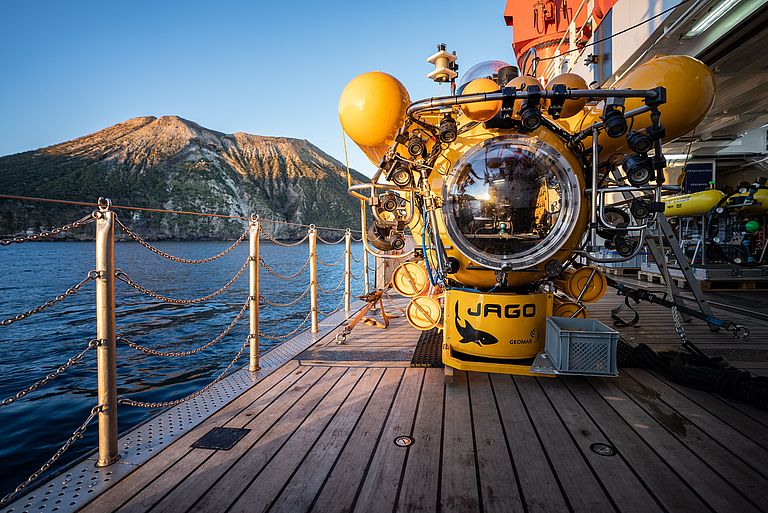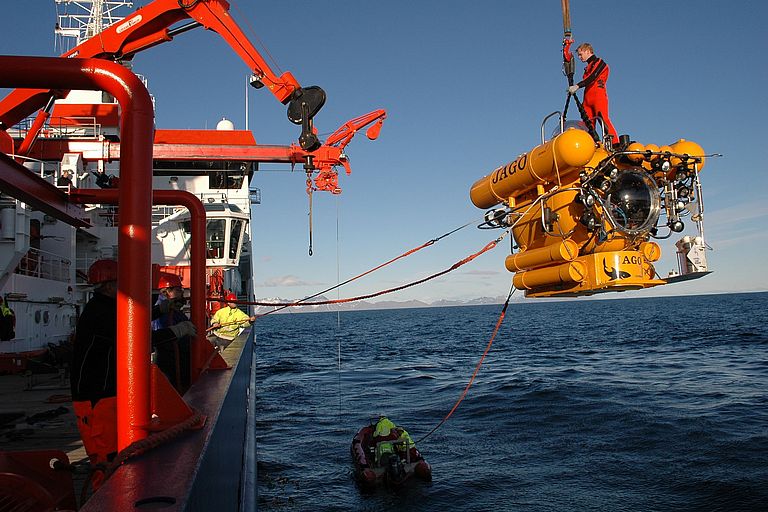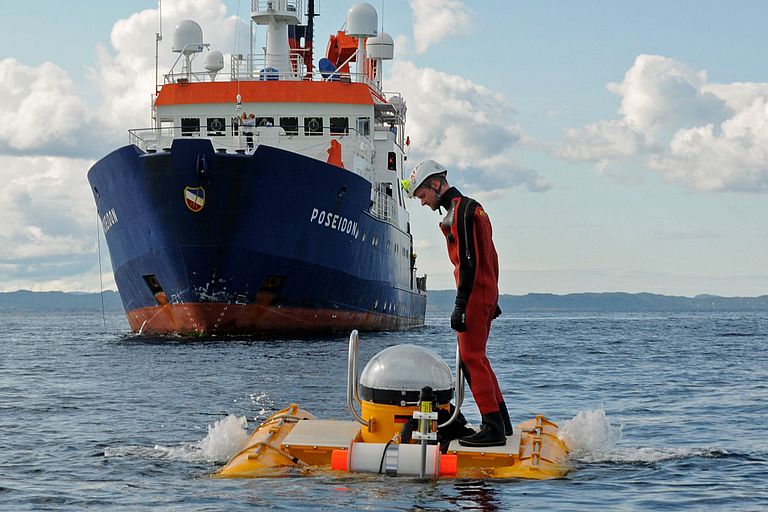Farewell to JAGO
Research submersible of GEOMAR will be decommissioned in 2021
It all started with Latimeria chalumae, the enigmatic coelacanth. The Biologist Professor Hans Fricke and submersible pilot Jürgen Schauer observed and filmed this prehistoric fish, which had already been considered extinct, in its natural habitat for the first time with JAGO's predecessor, the submersible GEO. This globally acclaimed discovery motivated the two to build the more powerful, deeper diving JAGO at the end of the 1980s. In 1989, the submersible, designed for a crew of two and a maximum operating depth of 400 meters, was put into operation. It was initially based at the Max Planck Institute in Seewiesen near Munich (Germany). In 2006, JAGO together with the builder and pilot Jürgen Schauer and the biologist and mission coordinator Karen Hissmann moved to Kiel to the Leibniz Institute of Marine Sciences (IFM-GEOMAR), the predecessor of today's GEOMAR. After more than 1400 dives and 4300 hours under water in over 30 years, now the decision has been taken to decommission the submersible next year after a final research mission in Norway.
“JAGO is not just one of our tools”, says Professor Katja Matthes, Director of GEOMAR. “With JAGO, many researchers associate unique insights and discoveries into otherwise hidden underwater worlds. This is another reason why the decision to retire JAGO was not an easy one”, the director continues. The decision was preceded by an intensive examination of the situation together with Frank Spiekermann, the administrative director of GEOMAR, and the JAGO team. One of the main reasons for the decision was the fact that in recent years it has not been possible to find a successor for the pilot Jürgen Schauer, who will retire at the end of the year. “We have tried very hard in the last years, but it turned out to be extremely difficult,” says Jürgen Schauer. In addition, the demand from the scientific community for the use of JAGO has declined in recent years while the use of remote-controlled and autonomous robots has increased. Furthermore, a future-proof modernization of the JAGO system would have required substantial investments.
Mission coordinator Karen Hissmann regrets the decommissioning very much. However, she also understands the decision. “More and more robotic systems are being used in marine research, and more scientists can participate in dives with remote-controlled robots via the screens on board the ships at the same time than with manned submersibles”, says the biologist. “Of course, there are many great memories and impressions attached to JAGO. Not only with us, but also with many scientists who have used the boat over the last 30 years,” Hissmann continues. “Diving yourself in a submersible is a different experience than exploring the water column and the seabed two-dimensionally on the screen.”
However, GEOMAR does not want to forgo entirely on the small “yellow submarine” either. “It will receive a representative place at GEOMAR as an ambassador for marine research. If Kiel marine sciences get a bigger showcase in the future, JAGO will definitely be there", says GEOMAR director Katja Matthes.
Please note:
For images marked "CC BY 4.0", the Creative Commons Attribution 4.0 International license applies:
https://creativecommons.org/licenses/by/4.0/deed.de






